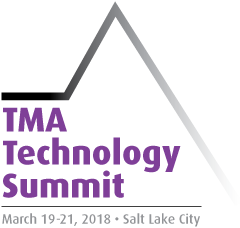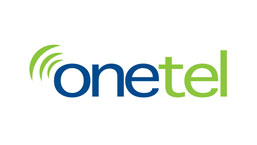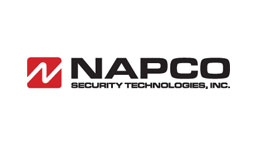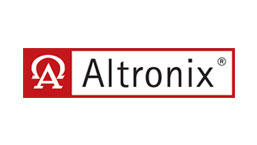As previously reported, on November 16, 2017, the FCC adopted an Order rolling back consumer protections in connection with the retirement of copper lines and the discontinuance of traditional telephone services. The FCC took this action even though the alarm industry, consumer advocates and members of Congress objected that the actions could lead to consumers losing their telephone service and could adversely impact alarm service.
This article provides a more detailed analysis of the Order and Further Notice of Proposed Rulemaking (FNPRM) adopted by the FCC overturning a number of protections previously adopted for consumers and competitors in connection with copper retirement and the discontinuance of telecommunications service. The FCC’s Order is the culmination of the Technology Transitions Notice of Proposed Rulemaking (NPRM), Notice of Inquiry (NOI), and Request for Comment (NPRM/NOI), in which the FCC outlined proposed changes to its rules ostensibly “to accelerate the deployment of next-generation networks and services by removing barriers to infrastructure investment.”
In the Order, the FCC eliminates the requirement that retail customers must be notified before their copper facilities are retired. The FCC eliminates the customer notification requirement even though AICC, many consumer advocates, state commissions and a number of U.S. Senators urged the FCC to maintain a notice requirement to protect consumers from potential confusion and the suspension or termination of their service. The Order limits a notice requirement to telephone exchange service providers that directly interconnect with the incumbent local exchange carriers (ILECs) network and reduces the amount of notice to 90 days after the FCC issues a public notice of the planned copper retirement.
The Order also eliminates the rule prohibiting ILECs from discussing planned network changes in advance of public notice. In an ex parte letter, AICC argued against this action because it would frustrate the nondiscrimination provisions of Section 275 of the Communications Act of 1934, as amended, and would have a negative impact on competition in the alarm industry. Section 275 requires ILECs to “provide nonaffiliated entities, upon reasonable request, with the network services it provides to its own alarm monitoring operations, on nondiscriminatory terms and conditions,” among other things. By prohibiting ILECs from disclosing information about network changes ahead of public notice, the FCC’s non-eliminated rule, Section 51.325(c), supported Section 275’s goal of ensuring that all alarm providers – affiliated or not – would have an equal opportunity when it came to utilization of ILEC network services. AICC stated that the absence of Section 51.325(c) may be interpreted as permission for ILECs to give their alarm service affiliates a clear competitive advantage over non-affiliates by providing advance notice of network changes. AICC argued that, in order to meaningfully preserve the level playing field that Section 275’s nondiscrimination requirement creates, unaffiliated alarm companies should be accorded the same access to information as affiliates, and the Commission should not permit ILECs to choose who receives information about network changes and who does not in advance of public notice.
The Order eliminates the “functionality test” standard for determining whether an ILEC must obtain section 214 authority to discontinue a service. Among other things, the functionality test required an ILEC to ensure that third-party devices, including alarm systems, would continue to work on a service intended to replace existing services. Instead the FCC only will require the new service to meet the carrier’s description of the service being terminated in its tariff—or customer service agreement in the absence of a tariff.
In its ex parte letter, AICC argued that the Commission’s decision to reverse the “functional test” is not in the public interest because alarm customers rely on their alarm equipment and services to protect their lives and their property and, therefore, before a service is discontinued there must be a service that continues to be compatible with alarm equipment and service. The FCC, however, has now found that “service providers do not bear the burden of ensuring compatibility with third-party devices.” According to the FCC, “carriers cannot know all of the myriad ways in which their services are used by customers, and it would be impracticable to require them to account for all these many uses in deciding whether a planned discontinuance triggers a requirement to file an application with the Commission. Carriers have no means of knowing what devices their customers are using and therefore cannot be expected to account for their proper functioning.” The FCC also found that it “makes more sense from a cost and efficiency perspective to require third-party manufacturers of ancillary devices— as opposed to telecommunications carriers —to bear the cost of ensuring compatibility. As the manufacturers of such devices— and the parties who know their operation and uses first-hand—these companies are in the best position to adapt such devices to changes in the underlying telecommunications service for the least cost and with the smallest disruption to consumers.”
The FCC also streamlines the discontinuance application process for carriers seeking to grandfather any voice and data services at speeds below 1.544 Mbps and the discontinuance process for applications seeking authorization to discontinue legacy data services that have previously been grandfathered for a period of at least 180 days; the FCC adopts new streamlined processing rules for applications to discontinue low -speed legacy services having no customers for the prior 30-day period; and the FCC finds that a carrier need not seek approval from the Commission to discontinue, reduce, or impair a service pursuant to section 214(a) of the Act when a change in service directly affects only carrier-customers.
In the FNPRM, the FCC seeks comment on a number of issues including whether a single interconnected VoIP service (without any service quality or other requirements) should enable streamlined discontinuance of legacy voice service. It also seeks comment on whether the FCC should streamline discontinuances for higher-speed data services.
Specifically, the FCC seeks comment on “Verizon’s proposal that the Commission streamline processing of section 214(a) discontinuance applications for legacy voice services where a carrier certifies: (1) that it provides interconnected VoIP service throughout the affected service area; and (2) that at least one other alternative voice service is available in the affected service area.” According to Verizon “adoption of this streamlined test ‘would compel carriers to maintain legacy services only in those rare instances . . . where their absence would cut consumers off from the nation’s telephone network’ and would ‘free[] carriers to focus on rolling out and improving the next -generation technologies their customers demand.’” The FCC seeks comment on the benefits and burdens of streamlining section 214(a) discontinuances for legacy voice services and on the benefits and burdens of Verizon’s specific recommendation.
In the FNPRM, the FCC also:
- Proposes to streamline the approval process for applications seeking to grandfather data services with download/upload speeds of less than 25 Mbps/3 Mbps, so long as the applying carrier provides data services of equivalent quality at speeds of at least 25 Mbps/3 Mbps or higher throughout the affected service area.
- Proposes a uniform reduced public comment period of 10 days and an auto-grant period of 25 days for all carriers submitting such applications. Under this proposal, such services must be grandfathered for a period of no less than 180 days before a carrier may submit an application to the Commission seeking authorization to discontinue such services.
- Seeks comment on AT&T’s proposal that the FCC eliminate the requirement that incumbent LECs provide public notice of network changes affecting the interoperability of customer premises equipment.
Comments on the FNPRM are due by January 17, 2018. Reply comments are due by February 16, 2018.
Thanks to Mary Sisak, attorney at Blooston, Mordkofsky, Dickens, Duffy & Prendergast, LLP, for this report.
 st? How about your staff? You can gain recognition throughout the industry for your efforts and success — apply now for the 2018 TMA Excellence Awards.
st? How about your staff? You can gain recognition throughout the industry for your efforts and success — apply now for the 2018 TMA Excellence Awards.

 What are the things that matter when it comes to technology and running and securing an effective business? That’s the focus of The Monitoring Association’s inaugural “TMA Technology Summit” coming up March 19-21 in Salt Lake City. We invite CTOs, CIOs, and IT directors of monitoring companies, as well as dealers, owners, and interested participants from manufacturing companies, to join us to learn about and discuss technology issues that directly affect monitoring centers.
What are the things that matter when it comes to technology and running and securing an effective business? That’s the focus of The Monitoring Association’s inaugural “TMA Technology Summit” coming up March 19-21 in Salt Lake City. We invite CTOs, CIOs, and IT directors of monitoring companies, as well as dealers, owners, and interested participants from manufacturing companies, to join us to learn about and discuss technology issues that directly affect monitoring centers. The Monitoring Association and Security Sales & Integration are pleased to announce “The Marvel” — the inaugural TMA/SSI Monitoring Technology “Marvel” Award. In 2018, this new award will honor innovations in monitoring center technology. It will be co-sponsored by TMA and Security Sales & Integration (SSI) and coordinated by the TMA Technology Committee.
The Monitoring Association and Security Sales & Integration are pleased to announce “The Marvel” — the inaugural TMA/SSI Monitoring Technology “Marvel” Award. In 2018, this new award will honor innovations in monitoring center technology. It will be co-sponsored by TMA and Security Sales & Integration (SSI) and coordinated by the TMA Technology Committee.





